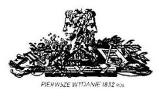THE IMPACT OF REMOTE WORK ON THE ORGANIZATION AND ITS EMPLOYEES
Keywords:
remote work, pandemic, GDPR, National Labor InspectorateAbstract
The history of remote work shows its development from historical times to the present, highlighting key socio-economic changes. The article also compares the concepts of remote work and telework, explaining their differences and applications. Various forms of remote work, such as home work, remote offices, mobile, variable and ad hoc work, are described with examples of their applications. The COVID-19 pandemic has significantly influenced the popularization of remote work, introducing significant social and organizational changes. In the context of the GDPR, the protection of personal data in remote work was discussed, emphasizing the need to maintain security. Employee rights in this model include decent working conditions, working time, rest and equal treatment. The article also analyzes the advantages and disadvantages of remote work, such as flexibility and time saving, and challenges such as
social isolation. The role of the National Labor Inspectorate includes supervision over compliance with regulations regarding remote work. Finally, technologies supporting remote work, such as software and communication platforms, which are key to efficiency and cooperation in this work model, are discussed.
Published
Issue
Section
License
Copyright (c) 2025 University of Applied Sciences in Raciborz

This work is licensed under a Creative Commons Attribution-NonCommercial-NoDerivatives 4.0 International License.


